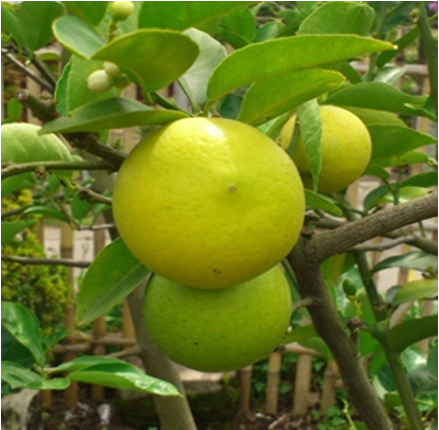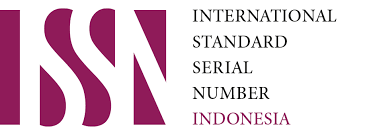Karakterisasi dan Kelayakan Ekonomi Citrus aurantifolia kultivar ‘Nimas Agrihorti’ sebagai Komoditas Biofarmasi Potensial di Indonesia
DOI:
https://doi.org/10.70158/buitenzorg.v2i1.17Abstrak
‘Nimas Agrihorti’ merupakan kultivar jeruk yang dikembangkan untuk memenuhi permintaan domestik yang meningkat akan jeruk bermutu biofarmasi di Indonesia. Pengembangannya sejalan dengan meningkatnya minat masyarakat terhadap produk pertanian yang meningkatkan kesehatan. Penelitian ini bertujuan untuk mengevaluasi karakteristik morfologi, komposisi kimia, dan kelayakan ekonomi ‘Nimas Agrihorti’ sebagai jeruk biofarmasi. Pengamatan lapangan dilakukan dari Juni 2019 hingga Oktober 2020 di Kebun Percobaan Banjarsari, Desa Bayeman, Probolinggo, Jawa Timur. Penilaian morfologi mengikuti Daftar Deskriptor Jeruk oleh IPGRI, dan analisis kimia dilakukan di Laboratorium Pasca Panen Universitas Brawijaya, Malang. Kelayakan ekonomi dinilai dengan menghitung biaya produksi dan pendapatan selama siklus budidaya 2 tahun. ‘Nimas Agrihorti’ menunjukkan sifat morfologi yang baik, termasuk ukuran buah besar (72–82 g), kulit kuning, dan rasa manis. Analisis kimia menunjukkan kandungan vitamin C sebesar 34,8 mg/100 g dan keasaman rendah sebesar 0,45%. Total biaya produksi selama 2 tahun adalah Rp42.640.000,00 (setara dengan USD 2.584), dengan total penerimaan sebesar Rp77.360.000,00 (setara dengan USD 4.688), sehingga menghasilkan rasio Pendapatan-Biaya (R/C) sebesar 2,81. Kombinasi karakteristik morfologi dan kimia yang diinginkan, bersama dengan keuntungan ekonomi yang kuat, menunjukkan bahwa ‘Nimas Agrihorti’ memiliki potensi yang signifikan untuk dikembangkan sebagai kultivar jeruk biofarmasi di Indonesia.
Kata kunci: jeruk, kultivar, produk biofarmasi, kelayakan ekonomi
Unduhan
Referensi
Adlini, M. N., Hafizah, D., & Umaroh, K. (2020). Characterization of citrus (Citrus sp.) plants in nibung hangus subdistrict, Batu Bara Regency, North Sumatra. KLOROFIL, 4(1), 1–7. https://doi.org/10.30821/kfl:jibt.v4i1.8921
Afin Fahrurin, W., Hadi, S., Eko Susetyarini, R., & Hardian Permana, F. (2023). A study of medicinal plant species utilized for traditional healthcare by the community in Sendang Subdistrict, Tulungagung Regency. Jurnal Bioedukasi, 6(1). https://doi.org/10.1051/bioconf/20249101016
Alaqeel, N. K. (2024). Antioxidants from different citrus peels provide protection against cancer. Brazilian Journal of Biology, 84. https://doi.org/10.1590/1519-6984.271619
Ali Abadi, S. M. H., Karami-Osboo, R., Kobarfard, F., Jahani, R., Nabi, M., Yazdanpanah, H., Mahboubi, A., Nasiri, A., & Faizi, M. (2022). Detection of lime juice adulteration by simultaneous determination of main organic acids using liquid chromatography-tandem mass spectrometry. Journal of Food Composition and Analysis, 105, 104223. https://doi.org/10.1016/j.jfca.2021.104223
Annisa, Z., Fareza, N. A., Cholissodin, I., & Muflikhah, L. (2022). Prediction of biopharmaceutical crop yields in Indonesia using the extreme learning machine method. Jurnal Pengembangan Teknologi Informasi dan Ilmu Komputer, 6(11), 5331–5338. https://doi.org/10.1051/bioconf/20249101016
Anuchapreeda, S., Anzawa, R., Viriyaadhammaa, N., Neimkhum, W., Chaiyana, W., Okonogi, S., & Usuki, T. (2020). Isolation and biological activity of agrostophillinol from kaffir lime (Citrus hystrix) leaves. Bioorganic & Medicinal Chemistry Letters. 30(14), 127256. https://doi.org/10.1016/j.bmcl.2020.127256
BRIN. (2023, November 17). Discussing Recent Research in Biopharmacy and Pharmaceuticals, BRIN Promotes a New Platform for Research Collaboration. BRIN. https://www.brin.go.id/news/116721/
Budiarto, K., Andrini, A., Budiyati, E., Mariana, B. D., Martasari, C., Mas’udah, S., Yulia, N. D., Ikarini, I., & Yulianti, F. (2024). Bioactive phytochemical contents on fruit peel of several citrus species. The 14th International Conference on Global Resource Conservation (ICGRC 2023) BIO Web of Conferences. https://doi.org/10.1051/bioconf/20249101016
CCRC UGM. (2008, May 19). Key Lime (Citrus aurantifolia). Faculty of Pharmacy. UGM.
da Silva, C. M. G., Contesini, F. J., Sawaya, A. C. H. F., Cabral, E. C., da Silva Cunha, I. B., Eberlin, M. N., & de Oliveira Carvalho, P. (2013). Enhancement of the antioxidant activity of orange and lime juices by flavonoid enzymatic de-glycosylation. Food Research International, 52(1), 308–314. https://doi.org/10.1016/j.foodres.2013.03.019
de Luna, F. C. F., Ferreira, W. A. S., Casseb, S. M. M., & de Oliveira, E. H. C. (2023). Anticancer potential of flavonoids: An overview with an emphasis on tangeretin. Pharmaceuticals, 16(9). https://doi.org/10.3390/ph16091229
Ernawati H.R, Suharjon, Fika, W., Sutopo, Rahmaniar, D., Husni, I., & Yunimar. (2023). Cultivation of Key Lime Citrus aurantifolia (1st ed.). Agriculture Press.
Gao, L., Gou, N., Amakye, W. K., Wu, J., & Ren, J. (2022). Bioactivity guided isolation and identification of phenolic compounds from Citrus aurantium L. with anti-colorectal cancer cells activity by UHPLC-Q-TOF/MS. Current Research in Food Science, 5,. https://doi.org/10.1016/j.crfs.2022.11.013
Gebregziabher, B. S., Gebremeskel, H., Debesa, B., Ayalneh, D., Mitiku, T., Wendwessen, T., Habtemariam, E., Nur, S., & Getachew, T. (2023). Carotenoids: Dietary sources, health functions, biofortification, marketing trend and affecting factors – A review. Journal of Agriculture and Food Research, 14, 100834. https://doi.org/10.1016/j.jafr.2023.100834
Hijaz, F., Al-Rimawi, F., Manthey, J. A., & Killiny, N. (2020). Phenolics, flavonoids and antioxidant capacities in Citrus species with different degree of tolerance to Huanglongbing. Plant Signaling & Behavior, 15(5), 1752447. https://doi.org/10.1080/15592324.2020.1752447
Ivakdalam, L. M., & Rehena, Z. (2020). Pengaruh rendaman jeruk nipis terhadap kandungan vitamin c dan ph minuman infused water. Jurnal Agribisnis Perikanan, 12(2), 344–349. https://doi.org/10.29239/j.agrikan.12.2.344-349
Khan, M. K., Zill-E-Huma, & Dangles, O. (2014). A comprehensive review on flavanones, the major citrus polyphenols. Journal of Food Composition and Analysis, 33(1), 85–104. https://doi.org/10.1016/j.jfca.2013.11.004
Khan, U. M., Sameen, A., Aadil, R. M., Shahid, M., Sezen, S., Zarrabi, A., Ozdemir, B., Sevindik, M., Kaplan, D. N., Selamoglu, Z., Ydyrys, A., Anitha, T., Kumar, M., Sharifi-Rad, J., & Butnariu, M. (2021). Citrus genus and its waste utilization: A review on health-promoting activities and industrial application. Evidence-Based Complementary and Alternative Medicine, 1–17. https://doi.org/10.1155/2021/2488804
Kumar, D., Ladaniya, M. S., Gurjar, M., Kumar, S., & Mendke, S. (2021). Quantification of flavonoids, phenols and antioxidant potential from dropped Citrus reticulata blanco fruits influenced by drying techniques. Molecules, 26(14). https://doi.org/10.3390/molecules26144159
Li, G., Rouseff, R., Cheng, Y., Zhou, Q., & Wu, H. (2021). Comprehensive identification and distribution pattern of 37 oxygenated heterocyclic compounds in commercially important citrus juices, LWT, 152, 112351. https://doi.org/10.1016/j.lwt.2021.112351
Liu, S., Li, S., & Ho, C.-T. (2022). Dietary bioactives and essential oils of lemon and lime fruits. Food Science and Human Wellness, 11(4), 753–764. https://doi.org/10.1016/j.fshw.2022.03.001
Mitra, S., Lami, M. S., Uddin, T. M., Das, R., Islam, F., Anjum, J., Hossain, Md. J., & Emran, T. Bin. (2022). Prospective multifunctional roles and pharmacological potential of dietary flavonoid narirutin. Biomedicine & Pharmacotherapy, 150. https://doi.org/10.1016/j.biopha.2022.112932
Mueed, A., Shibli, S., Al-Quwaie, D. A., Ashkan, M. F., Alharbi, M., Alanazi, H., Binothman, N., Aljadani, M., Majrashi, K. A., Huwaikem, M., Abourehab, M. A. S., Korma, S. A., & El-Saadony, M. T. (2023). Extraction, characterization of polyphenols from certain medicinal plants and evaluation of their antioxidant, antitumor, antidiabetic, antimicrobial properties, and potential use in human nutrition. Frontiers in Nutrition, 10. https://doi.org/10.3389/fnut.2023.1125106
Pebrianto, E. O., Ikawati, & Putri, D. A. (2023). Feasibility analysis of patchouli farming business in Burana Village, Tabulahan District, Mamasa Regency. Indonesian Journal of Agricultural Research, 5(03), 201–211. https://doi.org/10.32734/injar.v5i03.9409
Prommaban, A., & Chaiyana, W. (2022). Microemulsion of essential oils from citrus peels and leaves with anti-aging, whitening, and irritation reducing capacity. Journal of Drug Delivery Science and Technology, 69. https://doi.org/10.1016/j.jddst.2022.103188
Rahayu, R. S., Poerwanto, R., Efendi, D., & Widodo, W. D. (2020). Appropriate duration of drought stress for Madura tangerine flower induction. Jurnal Hortikultura Indonesia, 11(2), 82–90. https://doi.org/10.29244/jhi.11.2.82-90
Saini, R. K., Ranjit, A., Sharma, K., Prasad, P., Shang, X., Gowda, K. G. M., & Keum, Y.-S. (2022). Bioactive compounds of citrus fruits: A review of composition and health benefits of carotenoids, flavonoids, limonoids, and terpenes. Antioxidants, 11(2), 239. https://doi.org/10.3390/antiox11020239
Setyanti, Y. H., Anwar, S., & Slamet, W. (2013). Photosynthetic characteristics and phosphorus uptake of alfalfa (Medicago sativa) forage under different cutting heights and nitrogen fertilization levels. Animal Agriculture Journal, 2(1), 86–96. https://doi.org/10.3390/agriculture12081187
Shafiee, S., & Minaei, S. (2018). Combined data mining/NIR spectroscopy for purity assessment of lime juice. Infrared Physics & Technology, 91, 193–199. https://doi.org/10.1016/j.infrared.2018.04.012
Shafreen, R. B., Lubinska-Szczygeł, M., Różańska, A., Dymerski, T., Namieśnik, J., Katrich, E., & Gorinstein, S. (2018). Human serum interactions with phenolic and aroma substances of kaffir (Citrus hystrix) and key lime (Citrus aurantifolia) juices. Journal of Luminescence, 201, 115–122. https://doi.org/10.1016/j.jlumin.2018.04.010
Shimada, A., Ueno, H., Inagaki, M., and Yoshimitsu, H. (2022). Glutaminase inhibitory activity of umbelliferone isolated from kabosu (Citrus sphaerocarpa Hort. ex Tanaka). Natural Product Research, 36(2), 605–609. https://doi.org/10.1080/14786419.2020.1788553
Tullio, V., Gasperi, V., Catani, M. V., & Savini, I. (2020). The impact of whole grain intake on gastrointestinal tumors: A focus on colorectal, gastric, and esophageal cancers. Nutrients, 13(1), 81. https://doi.org/:10.3390/nu13010081
Yulianto, S., Jamilatun, M., Ari Pangesti, F., (2022). Analysis of vitamin c content in lime drink (Citrus aurantifolia) based on temperature variations using uv-vis spectrophotometry method. Jurnal forum ilmiah kesmas 7(2), 208–218. https://doi.org/10.35842/formil.v7i2.441
Yustiningsih, M. (2019). Light intensity and photosynthetic efficiency in shade plants and plants exposed to direct light. Bioedu, 4(2), 43–48. https://doi.org/10.32938/jbe.v4i2.385
Zulkifli, Z., Mulyani, S., Saputra, R., & Pulungan, L. A. B. (2022). Relationship between the length and width of pineapple leaves and the quality of pineapple leaf fibers based on leaf position and duration of leaf soaking. Jurnal Agrotek Tropika, 10(2), 247. https://doi.org/:10.23960/jat.v10i2.5461

Unduhan
Diterbitkan
Cara Mengutip
Terbitan
Bagian
Lisensi
Hak Cipta (c) 2025 Buitenzorg: Journal of Tropical Science

Artikel ini berlisensiCreative Commons Attribution-ShareAlike 4.0 International License.
The article is licensed under a Creative Commons Attribution-ShareAlike 4.0 International License (CC BY-SA), which allows both Authors and Readers to copy and distribute the material in any format or medium, as well as modify and create derivative works from it for any purpose, provided that appropriate credit is given (by citing the article or content), a link to the license is provided, and it is indicated if any changes were made. If the material is modified or used to create derivative works, the contributions must be distributed under the same license as the original.






